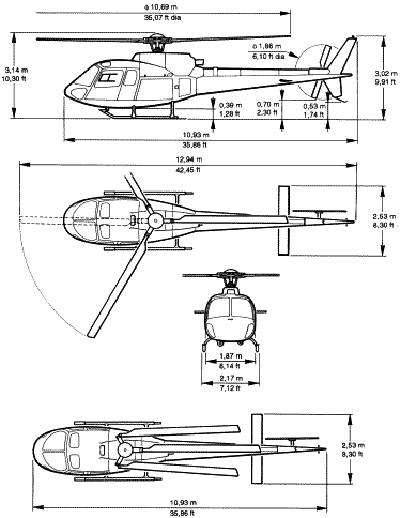
Helicopter Specifications
The Best Performing Single Engine Helicopter

Helicopter Safety
Safety is the primary focus of every H5 Helicopters. From our pilot’s pre-flight check, to safety briefings and pre-production, everything we do is about capturing stunning footage in a safe environment. H5’s flight and ground crews work with everyone on a production to ensure that the strictest safety protocols are followed.
The SaberCat 1 Aircraft is the perfect aerial platform for capturing amazing footage, but the unique attributes of a helicopter require additional safety precautions. Safety of the aerial crew, ground support team and passengers is critical while the aircraft is on the ground. All safety precautions should be followed regardless of whether the aircraft is powered or not.
Safety Guidelines
The following list is a brief overview of general safety guidelines for working around the aircraft. If you are uncertain about any safety requirements, ask the pilot or flight crew for an additional safety briefing.
- Always approach the helicopter from the front within the pilot’s vision.
- Only approach after the pilot has acknowledged your presence and waves you forward.
- Walk – don’t run, towards the aircraft.
- Always move towards the aircraft in a crouched position even if the blades are turning slowly.
- Never walk behind the aircraft or near the tail rotor or tail boom.
- Do not throw any object towards or away from the aircraft.
- Do not wear caps or hats that can blow off while walking near the aircraft. Do not lay loose clothing on the ground.
- Unless authorized specifically by the pilot in command, remain 100 feet away from any parked aircraft.
- No smoking in or around the aircraft or near fuel storage areas. Hangar 5 Productions facilities are designated as Non Smoking.
- Carry equipment parallel to the ground to avoid a rotor strike.
- Watch any take-off or landing from a safe distance of 300 feet or more. The down wash of the rotor blades can turn loose gravel into projectiles.
- If anything looks out of place or unusual, or you see unauthorized persons near the aircraft, immediately notify the pilot or flight crew.
- If you are in the aircraft, do not open the door or depart the aircraft unless you have verbal consent from the pilot. Helicopters typically have a three minute engine cool down period after landing. Be patient. Remember to always walk forward so the pilot can see you.
- Work as a team. Do not rush. Think through every move.
